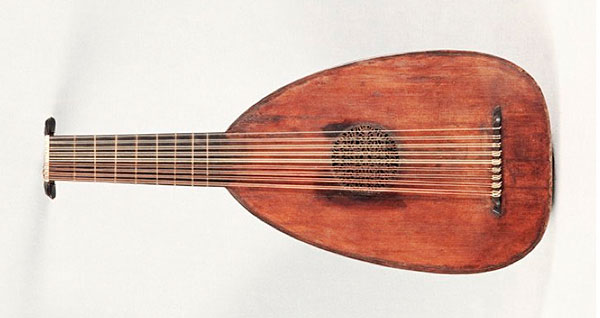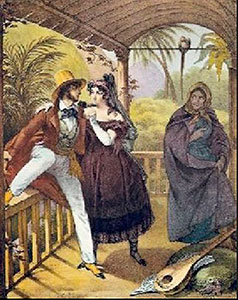Lute
Lute is formed by a wooden box half-pear shaped, with curved back. In the top of your body there is a circular opening lacy called rosette.
It has, as well as the guitar and the viola, an arm with frets, being wider and shorter. The end of this arm, which is where there are the pegs for tuning the strings, is very inclined. Generally has eleven strings, five doubles and a single.

Lute, built by Matheus Buchenberg, seventeenth century
A bit of history ...
The origins of this instrument come from the Middle East, specifically the Moorish culture. In the eighteenth century it was introduced into Europe through Spain dominated by the Arabs. The so-called Renaissance lute became, until the fifteenth century, the main instrument of plucked strings used by the Europeans.
In the nineteenth century and in Brazilian lands, the traveler and German painter Johann Moritz Rugendas portrayed in the picture Rio de Janeiro Customs a couple from Rio wealthy class next to a musical score and a stringed instrument plucked lute that appears to be small.
|
|
Watch this video to find out more about the lute.

